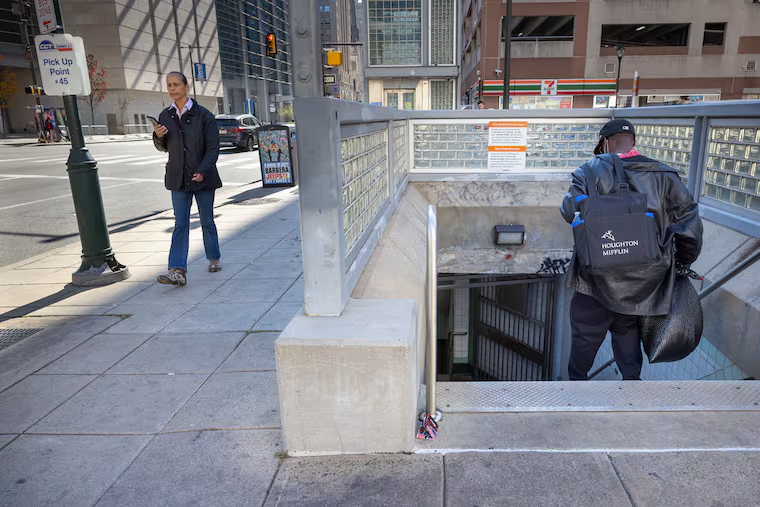SEPTA will roll out artificial-intelligence gun detection program on Market-Frankford, Broad Street lines
The program comes as the city faces an ongoing surge in gun violence, including recent shootings on SEPTA trains and at transit stations. It will detect guns on SEPTA's existing surveillance cameras.

SEPTA plans to test an artificial-intelligence surveillance program that will detect guns within seconds of being brandished along the transit system’s sprawling network.
The SEPTA board approved a pilot program Thursday to use ZeroEyes, an AI gun detection video analytics program developed by former Navy Seals and based out of Conshohocken, along the Market-Frankford and Broad Street lines, said Kelly Green, a SEPTA spokesperson.
The program comes as the city faces an ongoing surge in gun violence, including recent shootings on SEPTA trains and at transit stations.
The program will layer its software over SEPTA’s existing security cameras and the artificial intelligence will identify guns and alert local law enforcement within three to five seconds of detection, Green said. Former military and law enforcement specialists will be monitoring and verify every detection from ZeroEyes’ operations center, she said.
The monitors will identify details of the person wielding the gun, including what they look like, what they’re wearing, the type of weapon, and their real-time location, said Green.
“SEPTA is evaluating this new technology as part of the solution to gun violence. It can act as an early warning system to speed up response times from police officers. ZeroEyes is another tool that SEPTA can use to keep its riders and employees safe,” said Green.
Implementation is expected to take at least two months and the pilot will last for six months, said Green.
If the pilot period is successful, SEPTA will consider rolling ZeroEyes out to other parts of the transit system, said Green. Currently, SEPTA has more than 30,000 cameras throughout the system.
ZeroEyes CEO and cofounder Mike Lahiff said that the program, which is being used by the U.S. Department of Defense and school districts across the country, is a tool to help Philadelphia as it confronts surging violence.
“SEPTA is a forward-thinking organization that understands the urgent need to take action and is determined to proactively protect its customers,” said Lahiff. “Millions of people use public transportation every day, and it is unconscionable that some cannot do so without fearing for their safety. ZeroEyes AI detects guns and provides actionable intel to security and first responders to save time and save lives.”
Earlier this month, a 21-year-old man was shot and killed on SEPTA’s Broad Street line as a southbound train was pulling into Fairmount Station, police said. Investigators called the afternoon shooting a targeted attack and said the shooter timed the shooting with the train stopping.
From 2019 to 2021, robberies and aggravated assaults on the Philadelphia region’s transit system spiked more than 80%, despite often carrying fewer passengers due to the COVID-19 pandemic.
Programs like ZeroEyes, while touted as potential tools against mass shootings, have also prompted privacy concerns.
ZeroEyes does not use facial recognition software, Green said, and does not receive, store, record, or share videos or images of any person detected in footage. SEPTA surveillance video footage, however, has been shared with authorities for criminal investigations.